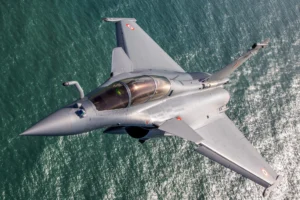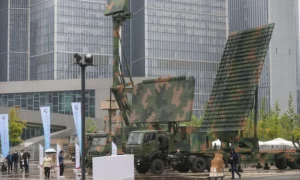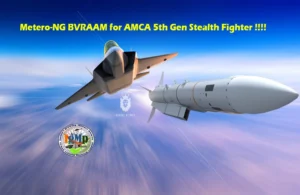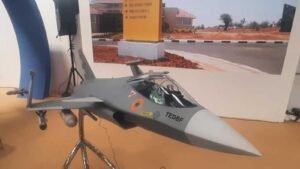Source : ABP News
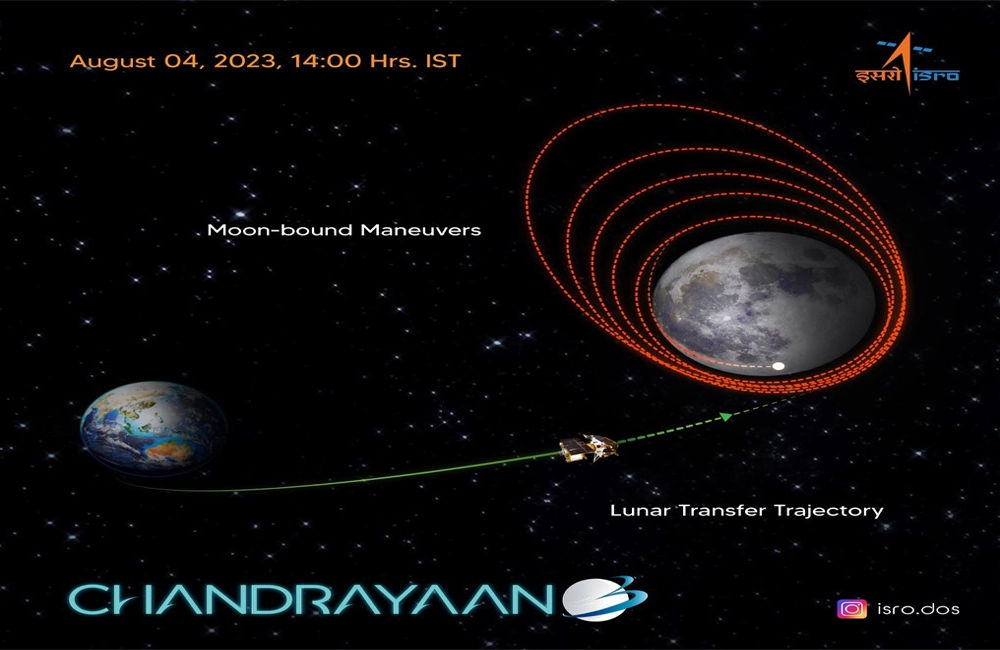
Chandrayaan-3 Covers Two-Thirds Of Distance To Moon, Lunar Orbit Insertion To Occur On August 5: ISRO
Chandrayaan-3 has covered two-thirds of the distance between Earth and Moon, the Indian Space Research Organisation said on Friday. The lunar orbit insertion of Chandrayaan-3 is set to occur on Saturday, August 5, 2023, at around 7:00 pm IST. On Tuesday, August 1, Chandrayaan-3 entered the Moon’s sphere of influence, after successfully completing an orbit-raising manoeuvre or a perigee burn. A perigee burn is one which allows a spacecraft to raise its orbit.
When Chandrayaan-3 reaches perilune, or the point in the lunar orbit at which the spacecraft is closest to the Moon, it will perform a manoeuvre that will allow it to inject itself into the lunar orbit, or achieve lunar orbit injection.
Chandrayaan-3 Mission:
The spacecraft’s health is normal.
Today’s perigee burn has successfully raised Chandrayaan-3 orbit to 288 km x 369328 km.
In this orbit, the spacecraft enters the moon’s sphere of influence.
A crucial maneuvre at perilune would achieve the Lunar…
— ISRO (@isro) August 1, 2023
In the early hours of August 1, Chandrayaan-3 completed its orbit around Earth following which it was injected into translunar orbit.
The Chandrayaan-3 spacecraft’s voyage towards the Moon began after ISRO’s largest and heaviest rocket, the Launch Vehicle Mark III (LVM3), carried India’s third lunar exploration mission from Satish Dhawan Space Centre, Sriharikota, Andhra Pradesh.
ISRO aims to land Chandrayaan-3’s lander softly on the Moon’s south pole. If this is achieved, India will become the fourth nation to complete the soft landing of a spacecraft on the Moon, and also the first country to land a spacecraft on the Moon’s south pole.
Chandrayaan-3 has three phases: the Earth-centric phase, the lunar transfer phase, and the Moon-centric phase.
The Earth-centric phase, or Phase-1, involves the pre-launch phase; the launch and ascent phase; and the Earth-bound manoeuvre phase, which will help the Chandrayaan-3 spacecraft change its directions.
The lunar transfer phase includes the transfer trajectory phase, as part of which Chandrayaan-3 chose the path that will lead it towards the lunar orbit.
The Moon-centric phase involves all the steps from lunar orbit insertion to landing.
The spacecraft consists of a lander, a rover and a propulsion module. The rover is fitted inside the lander, and together, they are called the lander module. The objectives of the mission are to demonstrate soft landing on the lunar surface, and roving on the lunar terrain, conduct in-situ scientific experiments, and develop and demonstrate new technologies required for interplanetary missions.
Chandrayaan-3 was inserted into Earth orbit a few minutes after launch. After this, the spacecraft was separated from the launch vehicle. The propulsion module is carrying the lander module to a lunar circular orbit whose size is 100 × 100 square kilometres. After this, the propulsion module and the lander module will separate.
The mission life of the propulsion module is three to six months. It weighs 2,148 kilograms, and has a power generation capacity of 758 Watts.
Chandrayaan-3 is expected to reach the lunar surface on August 23 or 24, 2023. Chandrayaan-3 Covers Two-Thirds Of Distance To Moon Chandrayaan-3 Covers Two-Thirds Of Distance To Moon Chandrayaan-3 Covers Two-Thirds Of Distance To Moon Chandrayaan-3 Covers Two-Thirds Of Distance To Moon Chandrayaan-3 Covers Two-Thirds Of Distance To Moon IgMp


